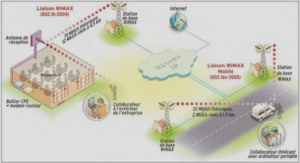Complexity assessment in terms of execution time and energy consumption
The results, in terms of computation cycles per 8 × 8 blocks for various 2-D transform are given in Table 3.4. From this Table, it is clear that the proposed transform requires less number of cycles compared to the other techniques. Table 3.5 shows the processing time and energy consumption obtained using different transforms. As expected, because of the substantial reduction in the number of arithmetic operations, the proposed transform is more efficient in speed and energy. On average, it managed to save 14%, 41% and 75% on both the processing time and energy consumption, compared with the methods presented in [68], [67] and [66] respectively. This would considerably increase the lifetime of the wireless sensor node. So, results indicate that the proposed transform not only reduces the execution time and energy consumption, but also provides superior results in terms of PSNR performance compared with recent works. DCT with a pruned approach. The proposed method requires 16 and 192 addition operations for 1D and 2D respectively. Experimental comparisons with recent works, using Atmel Atmega128L platform, show that the proposed scheme reduces the energy consumption, processing time and provide a better performance in terms of PSNR metric. This makes it quite suitable to be used in WISNs with a prospect to increase the lifetime of the sensor nodes. We believe that a hardware implementation in ASIC/FPGA will provide an even better performance, and will be considered in the future work.
Second proposed 8 by 8 DCT approximation
was derived and is depicted in Figure 3.9. According to this proposed algorithm the computation of the proposed DCT approximation requires 24 and 384 additions for the 1-D and the 2-D versions respectively. To evaluate the performance of the proposed transform in image compression, we used it as part of the JPEG chain. This JPEG chain includes standard quantization table and Huffman encoder that are given in the JPEG standard [79]. For this purpose, we considered a set of 512×512 8-bit standard grayscale images taken from . Table 3.6 provides the resulting PSNR for the proposed transform and P-BDCT [68] for the same complexity (i.e. L = 8) and bitrate = 0.5 bpp. It is clear from this table that the proposed transform leads to superior performances in terms of image quality. An average of 0.3 dB in PSNR gain was obtained. Figure 3.10a and Figure 3.10b show the PSNR against L using the two transforms at a bit rate of 0.5 and 0.2 bpp respectively. It can be easily seen that the proposed transform outperforms P-BDCT [68] in terms of PSNR whatever the values of L and bitrate are. The average PSNR gain is about 0.56 dB. Note that, for a large set of test images, the method maintains the same performance and doesn’t depend on the image type.
Complexity assessment in terms of number of operations
Table.3.7 summarises the number of additions required to compute an 8×8 block using the proposed 2-D transform compared to P-BDCT [68]. It can be seen from Table 3.6 that the proposed 8×8 DCT approximation is of less complexity than the transform P-BDCT [68]. It requires about 9 % less arithmetic operations. Therefore, the proposed transform is expected to perform better in terms of energy consumption at the WISN nodes. execution time and energy consumption per 8 × 8 blocks for the proposed transform and for P- BDCT [68] are given in Table 3.8. From this table, it is clear that the proposed transform requires less cycles than the transform P-BDCT [68]. As expected, because of the reduction in the number of arithmetic operations, the proposed transform is more efficient in energy. On average, it managed to save about 10% on both the execution time and energy consumption as compared to the work in [68]. This will certainly result in a tangible increase in the lifetime of the WISN nodes. proposed transform [76] and P-BDCT [68] on the Atmega128 L platform The proposed transform not only reduces the execution time and energy consumption, but also provides superior results in terms of PSNR. The obtained experimental results show that the proposed scheme reduces the energy consumption, when compared to P-BDCT, while at the same time provides a better performance in terms of PSNR metric.




